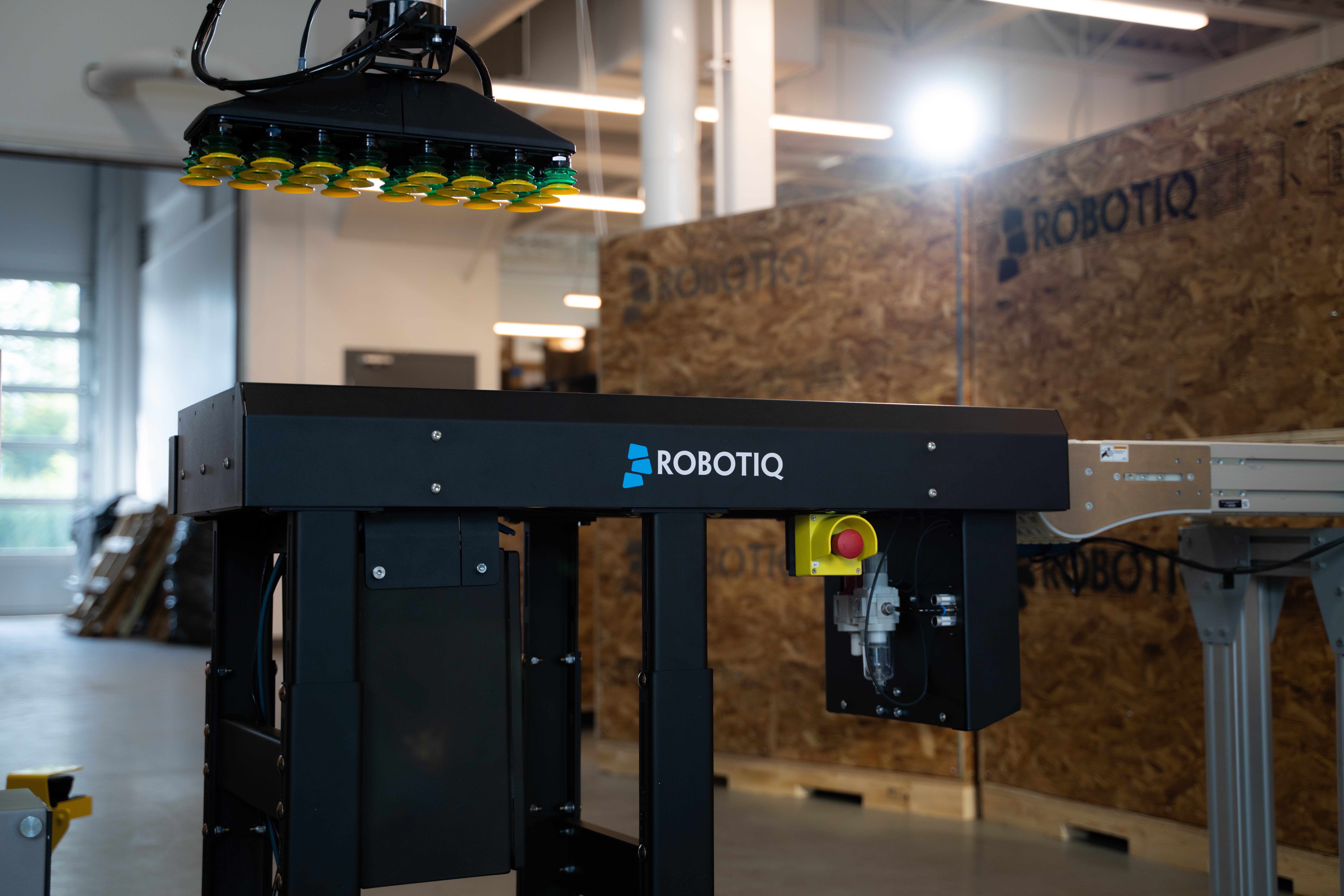US Engineers Have Created The Most Advanced Multifunctional Robot In The World
The world of robotics and artificial intelligence is advancing at a rapid pace, and US engineers are at the forefront of these groundbreaking developments. From Stanford University’s introduction of the mobile Aloha robotic system to Elon Musk’s company Neuralink implanting its chip into the first volunteer, there are numerous exciting advancements taking place.
Stanford University’s mobile Aloha is a game-changer in the realm of robotics, as it surpasses humans in culinary skills and can perform a variety of tasks autonomously, including frying and serving shrimp and opening cabinets. What sets this robot apart is its affordability and open-source hardware system, making it accessible and versatile for a wide range of applications.
Agility Robotics’ humanoid robot Digit has also made significant progress in understanding natural language commands through the use of chat GPT, marking a significant step forward in the integration of artificial intelligence into physical embodiments.
Elon Musk’s Neuralink has successfully implanted its chip into the first volunteer, opening the door to potential advancements in controlling electronic devices through the power of thought. Meanwhile, Chinese company Unry has introduced its humanoid robot H1, which boasts impressive agility and capabilities, further pushing the boundaries of what robots can achieve.
Overall, these developments signify the rapid evolution of robotics and artificial intelligence, paving the way for a future where multifunctional robots play an increasingly integral role in various industries and everyday life.
Watch the video by Carros Show
Video Transcript
The humanoid robot digit from agility robotics has learned to understand people in natural language thanks to chat GPT Elon musk’s company neuralink has finally implanted its chip into the first volunteer the Chinese company unry has begun Mass sales of its humanoid robots H1 robotics engineers from Stanford have introduced the latest
Robotic system mobile Aloha which surpasses humans in culinary skills additionally scientists from Duke University have mastered the art of 3D printing human organs directly inside the human body these and other high-tech news are featured in one video robotics researchers from Stanford University have introduced mobile Aloha an affordable open- Source Hardware
System for the autonomous operation of mobile buy manual robots training the system to perform tasks successfully requires only about 50 demonstrations achieving an 80% success rate after this human operators are no longer needed similar robotic systems performing complex manipulation tasks were previously limited to stationary activities lacking the mobility and
Agility required for practical everyday tasks mobile Aloha is designed so that its manipulators can easily coordinate with primary actions this approach enabled it to autonomously perform tasks such as frying and serving shrimp opening a two-door wall cabinet for kitchen utensil storage calling and entering an elevator and rinsing a dirty
Frying pan from the kitchen faucet the robot’s training involved a combination of Direct Control and observation for instance to teach it to cook shrimp it was remotely controlled 20 times with slight variations this approach allowed the robot to understand different methods of solving the same task the machine also received data from previous
Training sessions involving other robots with different routine tasks one might encounter in a kitchen this Collaborative Learning helped the robot acquire the necessary skills to work effectively in a restaurant interestingly the entire setup including a webcam and a consumer level laptop with a graphics processor costs about $32,000 significantly cheaper than
Readymade buy manual ual robots that can cost $200,000 the humanoid robot digit from agility robotics has learned to understand commands in natural language the company has previously conducted experiments with chat GPT and now Engineers have once again announced the use of an unspecified large language model to see the physical embodiment of
Artificial intelligence for the experiment the robot was placed in an environment with towers made of various boxes the robot knew the differences between the boxes but had no idea what to do with them then Engineers started giving commands like take the box of the color of Darth Vader’s lightsaber and
Place it on the highest pedestal and observe the robot’s response the robot would think and strategize its actions while the neural network in the chat would provide commentary this is roughly what the future may look Like Elon musk’s company neuralink has implanted its chip into the first volunteer the patient is currently recovering after the implantation and according to the entrepreneur everything is going well initial results show promising detection of neuron impulses musk wrote on his ex social media platform this also indicates that the company’s robot for implantation
Performed excellently once the recovery period is over we will finally be able to find out if the chip indeed allows control of electronic devices through the power of thought how challenging it is to master its usage and how effective it is compared to Alternatives we await reports from Elon and hope that the
First neuralink volunteer will not be disappointed it is worth noting that contrary to established practice regulatory authorities allowed musk to implant the device and several volunteers simultaneously which raises some concerns considering elon’s impatience and his tendency to iterate on the Fly and immediately test things
In practice we hope that in this case he will exercise the utmost caution Disney has decided to showcase the hollow tile smart floor which as they stated will solve a significant issue with VR headsets according to the demonstration video each cell of the smart mat can rotate independently of
The others allowing people to move in different directions while staying in place the company did not provide details on how the technology works but demonstrated that the unique flooring allows for remote control of objects placed on it Disney engineer Lanny Smoot mentioned that he is not sure where the
Technology will be applied but he believes it is best suited for VR projects dance and theatrical performances the video illustrates the first application where friends can interact with the mat recognizing two people and enabling them to move in different directions the hollow tile system is modular and expandable meaning
It can be customized to fit various spaces and scenarios Chinese company unry is also making strides in the field of humanoid robots and the visibly agile H1 robot showcased in a video is now available for order at a price below $90,000 the first delivery is scheduled for the end of February
2024 this electric humanoid standing at 180 cm and weighing 47 kg approximately 103 lb has a maximum speed of 5 m/s it features four degrees of freedom per arm and five per leg with the ability to to carry a payload of up to 8 kg in its
Hands the H1 is positioned as a research project for further development and its design is still being refined grippers and hand fingers as well as legs with six Dees of Freedom are being designed for the H1 the robot is equipped with two built-in Intel Core i7 processors a
3D lighter and a depth camera for obstacle and object detection in the vicinity of its arms unry provides a one-year warranty for the robot and assures that its maintenance will not be problematic given its modular Construction the Chinese startup limex Dynamics which recently announced the development of a humanoid robot capable of walking
Independently on uneven terrain has demonstrated its training in various other areas such as boxing drum playing box carrying and more fortunately the engineers honestly stated that these activities are currently carried out in teleoperation mode however all these trials serve the purpose of collecting data and training control algorithms we
Continue to monitor the progress of the Chinese in the field of humanoid robotics scientists from Duke University and Harvard Medical School have developed a new method called Deep penetrating acoustic volumetric printing this technique enables the introduction of liquid biocompatible inks into the human body and subsequently printing necessary
Tissues and even implants right on the spot using ultrasound it is a kind of 3D printing carried out directly within the body after printing the desired object the remaining ink can be removed using a syringe depending on the goals both stable and biodegradable materials can be used for printing the researchers
Have already tested the method on a goat printing a section of its heart and they have also successfully reconstructed a portion of a chicken bone using this technique in a third application the scientist printed hydrogels for the controlled delivery of chemotherapy drugs within liver tissues in the United Kingdom an
Autonomous asphalt repair bot is soon to be deployed on roads RS prevent developed by the company robotized is equipped with artificial intelligence and cameras that enable it to scan Road surfaces detecting cracks protrusions and other defects the bot then uses specialized tools to solve these issues
RS prevent can operate 247 and does not require human involvement during the repair process this can lead to a reduction in road maintenance costs by up to 90% and an acceleration of repairs by up to 70% additionally such a method has the potential to significantly alleviate traffic congestion and enhance
Safety the first Trials of the robot will take place on one of the streets in hartfordshire over the next few months if the results are positive similar robots may be deployed for use on other roads the seag glider electric vessel on a dynamic air cushion is ready to revolutionize Coastal transport in the
Past the concept of a ground effect vehicle was deemed impractical due to various technological constraints but progress in energy and materials now allows for a re-evaluation of this idea Regent has managed to reduce hydrodynamic resistance with retractable underwater wings while also increasing range through efficient use of the
Ground effect and Wing design the the result is the vicroy seag glider aircraft designed for 12 passengers or, 1600 kg of cargo 3,527 lb not including the two crew members with a minimum range of 300 km at a cruising speed of 300 kmph 186 m
Per hour and a flight altitude of 9 to 18 m above the water surface it is approximately six times faster and significantly more convenient than a traditional motorboat additionally it can handle much higher waves than boats of similar size compared to airplanes operating cost are reduced by approximately half and the ground effect
Vehicle produces significantly less noise judging by pre-orders totaling $8 billion the world has embrac this idea and Regent plans to build a large assembly plant for electric ground effect Vehicles right in the comments what you liked most after watching this video don’t forget to like this video And
Subscribe to the caros show channel also check out our previous videos see you next Time
Video “US Engineers Have Created The Most Advanced Multifunctional Robot In The World” was uploaded on 02/03/2024 to Youtube Channel Carros Show

























